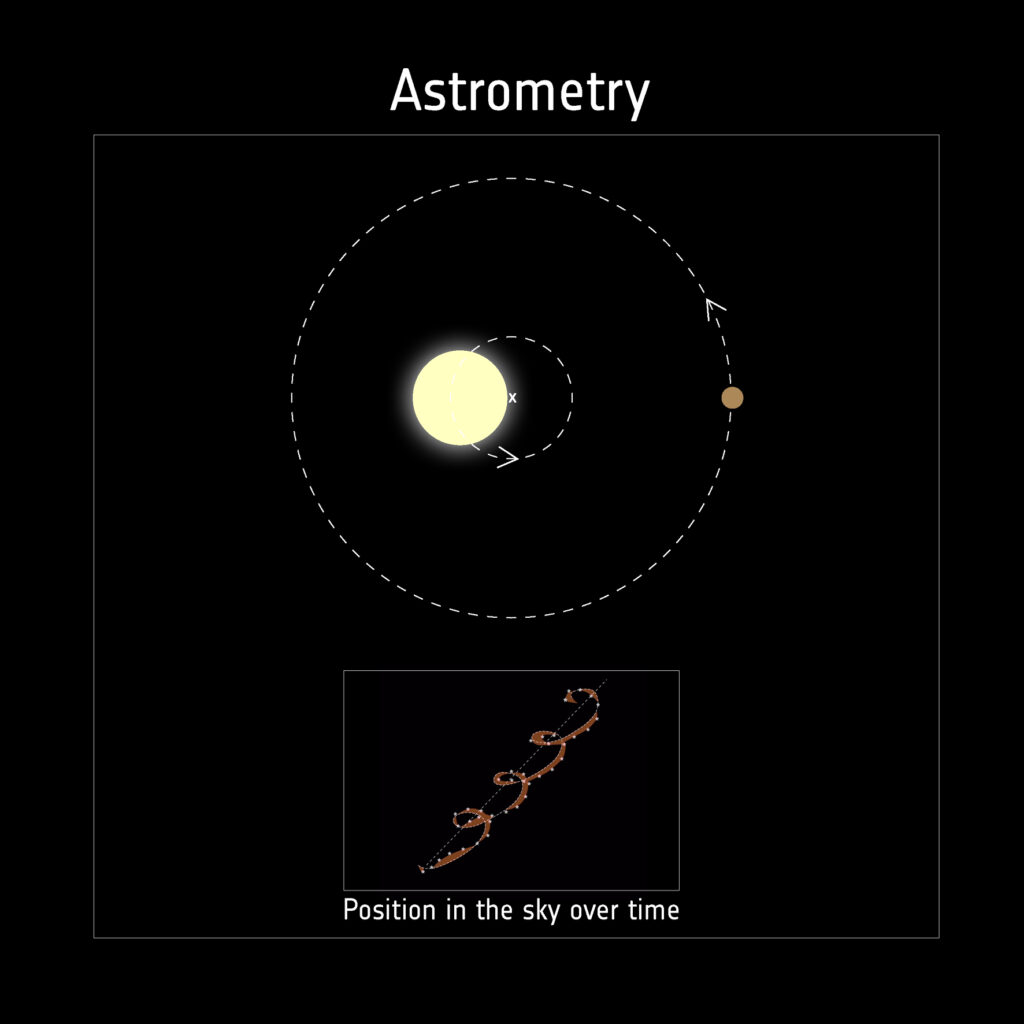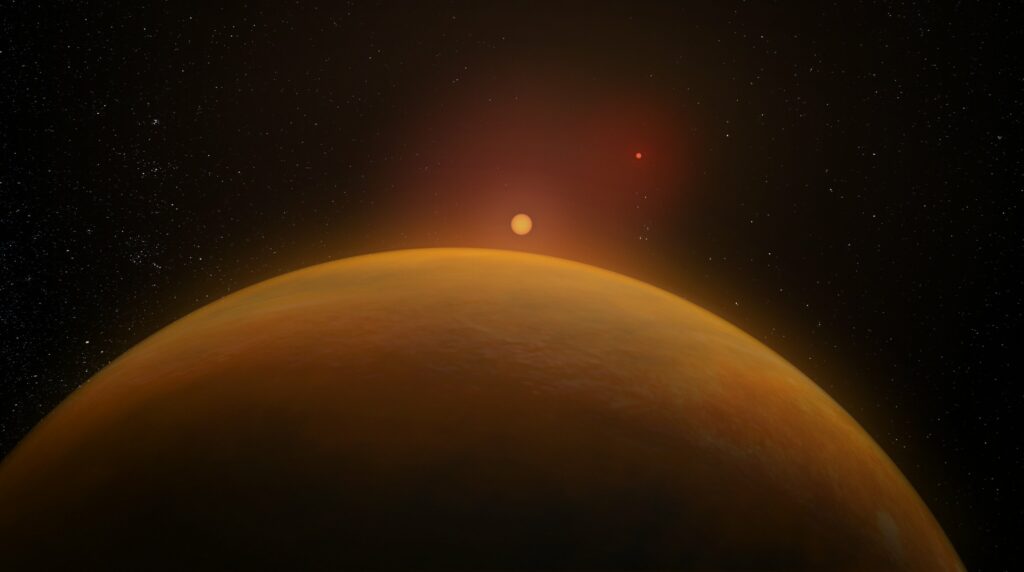Astronomers from the US National Science Foundation have announced the discovery of an exoplanet that is part of a binary system. The discovery was made thanks to the use of the astrometry method. It allowed to determine the complete three-dimensional structure of orbits, pairs of stars and exoplanets.
Astrometry method
The astrometry method is based on accurately measuring the position of a star in the sky and determining how this position changes over time.If a planet orbits around a star, then its gravitational influence on the star will cause the star itself to move in a small circular or elliptical orbit (i.e. they will rotate around a common center of mass).

The described method is extremely difficult to apply. To date, only 3 out of more than 5,000 confirmed exoplanets have been found using astrometry. This is due to the fact that the deviations in the position of the star are so small that it is extremely difficult to fix them, even with the most powerful of existing telescopes.
Nevertheless, the astrometry method has several important advantages. Firstly, it allows detecting exoplanets located at a great distance from their stars. And secondly, it makes it possible to determine the 3D architecture of binary star systems, which none of the other existing methods of searching for exoplanets are capable of.
3D portrait of a binary star system
The newly discovered exoplanet is part of the close binary system GJ 896AB. It is located at a distance of 20 light-years from Earth and consists of two red dwarfs separated by a distance comparable to the distance between the Sun and Neptune. The mass of one of the stars is 44% solar, the mass of the other is 17% solar. It takes 229 years for them to revolve around each other.

To find the exoplanet, astronomers combined the results of optical observations of the system in the period from 1941 to 2017, with data from the VLBA radio telescope complex for 2006 – 2011, as well as 2020. Subsequent analysis revealed the “rocking” of one of the stars caused by the gravity of its invisible companion. Its mass is twice the mass of Jupiter, and the period of rotation is 284 days.
Astronomers were also able to determine the inclination of the orbit of the exoplanet. It is 148 °. This means that the planet is moving around the main star in the direction opposite to the direction of movement of the second star, around the same star. Since all the bodies of the system had to be formed from a single disk, this raises the logical question of what mechanism led to the formation of such an unusual orbit.
According to scientists, they hope that the next generation of telescopes will allow much more active use of the astrometric method. This will give an opportunity to study the orbital structure of other binary star systems.
According to https://public.nrao.edu
Follow us on Twitter to get the most interesting space news in time
https://twitter.com/ust_magazine

